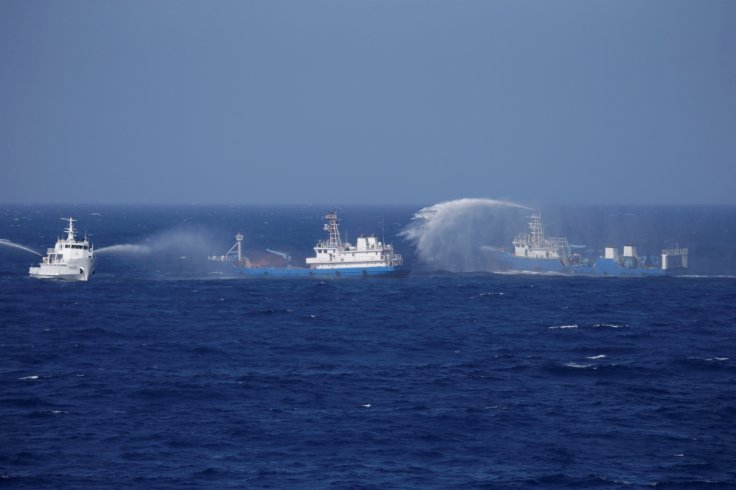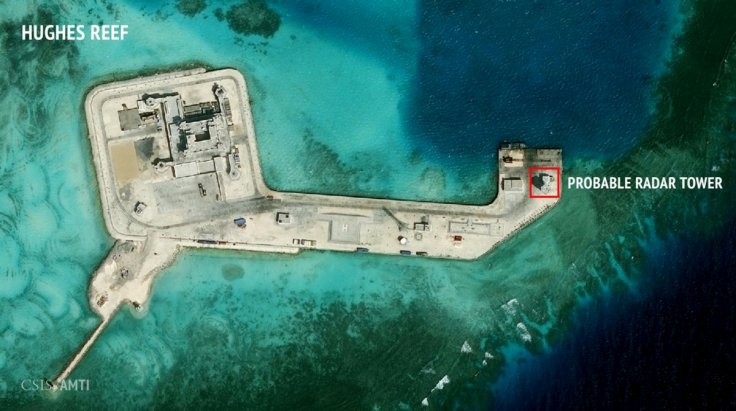The US Navy's guided-missile destroyer USS Milius carried out a mission in South China Sea on Monday, amid rising tensions in Taiwan Strait following China's deployment of dozens of fighter aircraft around the self-ruled territory.
The US Navy said the USS Milius mission was about upholding navigational rights in the South China Sea and was held near the Spratly Islands. "At the conclusion of the operation, USS Milius exited the excessive claim area and continued operations in the South China Sea ... This freedom of navigation operation upheld the rights, freedoms and lawful uses of the sea," the US Navy said.

The exercise was held in the backdrop of China's holding of simulated precision strikes on Taiwan. China had earlier objected to the presence of the destroyer near the Paracel Islands.
Strategic Region
The Paracel Islands, also known as the Xisha Islands and the Hoang Sa Archipelago, are a disputed archipelago in the South China Sea. China's bid to take total control over the disputed lands is deemed as a threat to freedom of navigation in the region. The dispute over maritime rights in the South China Sea has been a key element of the rising tensions between Beijing and Washington.
The South China Sea has huge oil and natural gas reserves beneath its seabed. Brunei, Malaysia, the Philippines, Taiwan and Vietnam also have claims to parts of the sea. However, China has been militarizing the region by dominating the smaller Southeast Asian nations that claim rights to the islands.

Overlapping Claims
The overlapping claims of sovereignty over two island chains by China, Taiwan, Malaysia, the Philippines, Vietnam and Brunei has made the South China Seas a sensitive region. The United States has strategic interests in the region as well, and it offers a counter balance against Beijing's influence in the waters.
The US adopts a stern line against China's land reclamation, construction and militarization in these islands but China staunchly defends its claim to sovereignty in the region. Beijing's claim to vast swathes of the area challenges the territorial integrity of a handful of countries who say their exclusive economic zones are violated by Beijing. For the US, China's ultimate control of the waterway, through which trade worth trillions of dollars happens every year, is an absolutely unacceptable scenario.
Military Interests

The US too has US military facilities in Southeast Asia -- Philippines and Thailand. It also has stationed its Poseidon sub-hunters and electronic warfare platforms in Malaysia and Singapore. The mostly uninhabited islands in South China Sea are of crucial strategic importance. The two major island chains -- the Paracels and the Spratlys -- are thought to harbour natural resources around them. China hopes the oil and natural gas reserves in the region could ensure its energy security.
Freedom of Navigation
China's militarization of the islands poses a threat to international maritime freedoms in the region. The sea is also a major trading route through which ship-borne trade worth $5 trillion passes every year. For energy hungry China the sea routes in the South China Sea are crucial as most of its imported oil flows through these routes. Control over the territory allows Beijing to prevent the US from expanding its sphere of influence in the region.
On Sunday, China's military simulated precision strikes against Taiwan. The move was largely in response to the high profile visit of Taiwanese President Tsai ing-wen to the United States, where she held a meeting with US House Speaker Kevin McCarthy. China had decried the meeting, and called on the US to cancel it. The Chinese foreign ministry had strongly condemned the meeting between Tsai and McCarthy. "China will take firm and forceful measures to firmly safeguard national sovereignty and territorial integrity," a spokeswoman said.
Threat to Taiwan
China considers self-ruling Taiwan as a rogue regime and vows that it will reunify the territory eventually. China has not ruled out using military force to reunify the island to the mainland. Beijing, which uses all diplomatic powers to isolate Taiwan in the international space, sees the US support to Taipei as an affront on its own territorial integrity.









